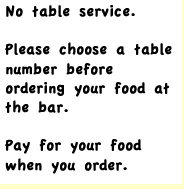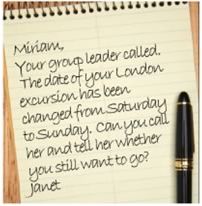Part II. Read the passage and choose the True if the given question is right, False if the given one is wrong.
Explore the Villages around Hartbridge
Many visitors come to Hartbridge to see the wonderful art galleries and museums, the beautiful buildings and the fantastic parks. Few people go outside the city, and so they miss out on experiencing the scenery and the fascinating history of this beautiful area. This brochure will tell you what you can see if you take a short bus ride out of the city.
Camberwell
The historic village of Camberwell was once the home of the wealthy Hugo family. They lived in a huge country house, Camberwell Court, and owned all the land in the area. The family sold their house in the 1940s, and it is now open to the public. You can spend a whole day walking around the house and gardens. There is a small exhibition about the family, a children’s play area, a gift shop and a restaurant. But the village of Camberwell is also worth a visit. There are some beautiful cottages with well kept gardens, and there is a small church which dates back to the eleventh century. To get to Camberwell, take Bus 46 from the Bus station. Buses leave every two hours.
Hidcot
Hidcot is an attractive village situated on the River Owell. Wildlife lovers should visit the Nature Park to the south of the village, where there are large numbers of rare birds and flowers. However, you will probably see plenty of wildlife from the bridge in the village centre! In Hidcot, you can take a two-hour river cruise - a great way to see the countryside and learn about the local wildlife from a guide. If you prefer to explore the river by yourself, it’s well worth walking one and a half miles along the river to the pub ‘The Boat’ which cannot be reached by road. Here, you can hire small boats and explore the river at your leisure. To get to Hidcot, take Bus 7A to Reeford. Hidcot is half way between Hartbridge and Reeford.
Tatterbridge
The beautiful village of Tatterbridge was home to the children’s writer Jane Potter, whose stories of Benjamin Bear are loved by adults and children around the world. Jane Potter’s home is now a museum and tea shop, and is well worth a visit just for its wonderful gardens. It also has a gift shop where you can buy souvenirs and books. Tatterbridge has a number of interesting shops including an excellent cake shop, and ‘Wendy’s Giftshop’ where you can find lots of unusual gifts made by hand by local artists. Lovers of Jane Potter’s books should also walk to the Green Valley woods, which have not changed since Jane Potter wrote her stories there one hundred years ago.
To get to Tatterbridge, take Bus 4 from outside the cinema. It takes about 40 minutes to get there.
Moordale
This old industrial village is the highest village in the area. Here in the hills, coal was found in the late eighteenth century, and people came here in great numbers to take it out of the ground and transport it to the nearby towns. Many industries grew up in the area, including a paper factory and a cotton factory. The industries all closed down in the nineteenth century, and since then Moordale has gone back to being a quiet farming village. However, if you walk from the village centre up the steep hill to the north, you can still see the paths where horses used to carry the coal. There is a four mile walk around the village which has some amazing views, but walkers are must be careful as the path is steep in places and they could slip. To get to Moordale, take Bus 7A to Reeford, and then take the number 38 bus to Moordale.
1. It is unusual for visitors to visit the villages near Hartbridge.
2. The Hugo family allows people to visit their current home.
3. The leaflet advises visitors not to spend all day at Camberwell Court.
4. You can hire small boats from the bridge in Hidcot.
5. You can take the bus directly to ‘The Boat’ pub near Hidcot.
6. The leaflet says that the gardens are the best part of Jane Potter’s home.
7. Jane Potter wrote her books in the Green Valley woods.
8. You can visit the paper factory and the cotton factory in Moordale.
9. You will see horses on farms as you walk around Moordale.
10. You can get to all four villages directly from Hartbridge.






